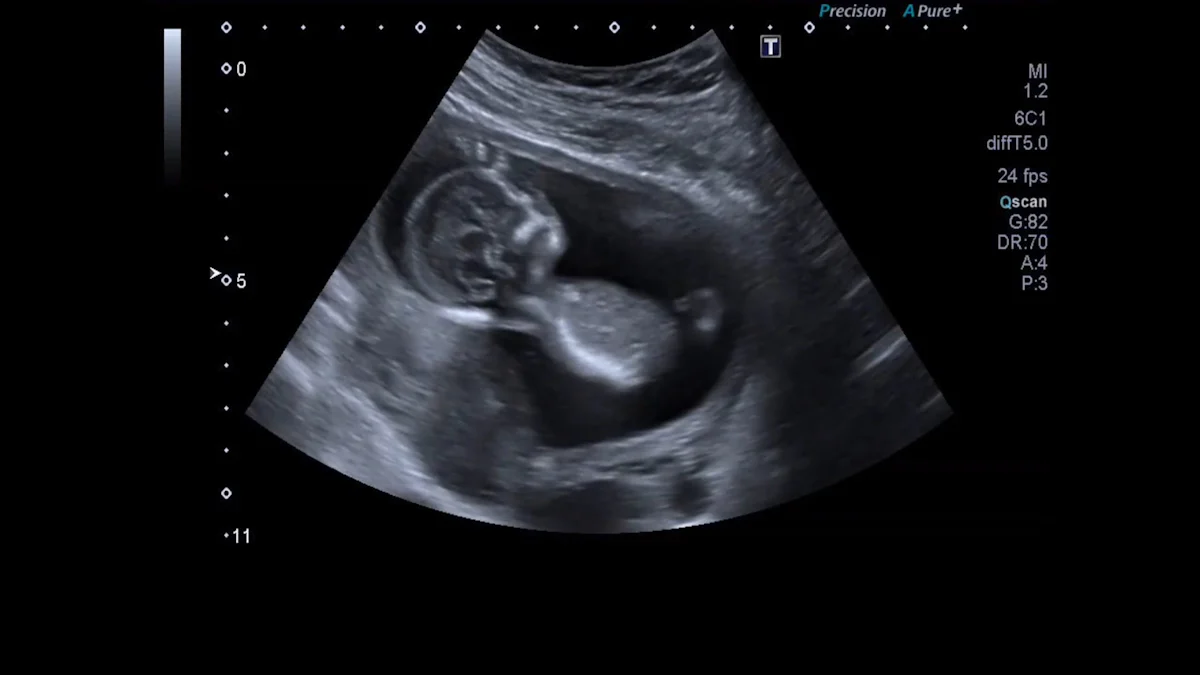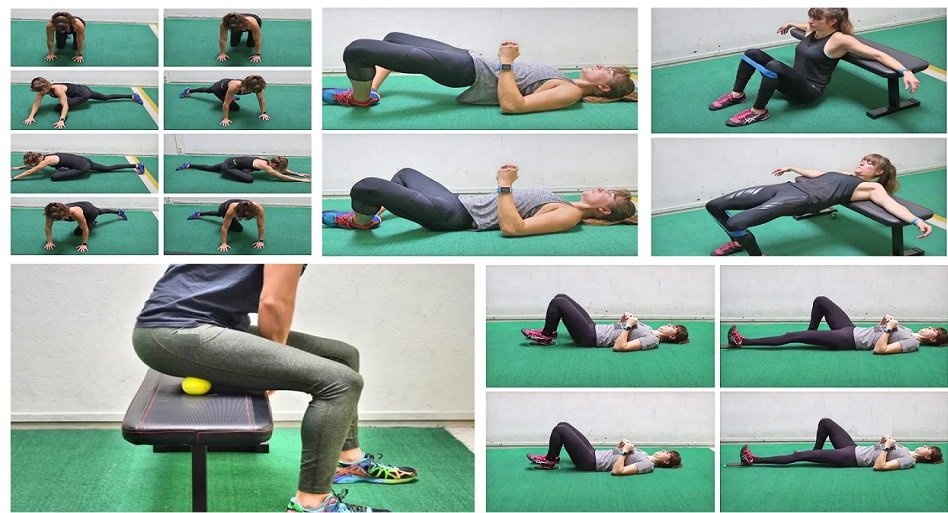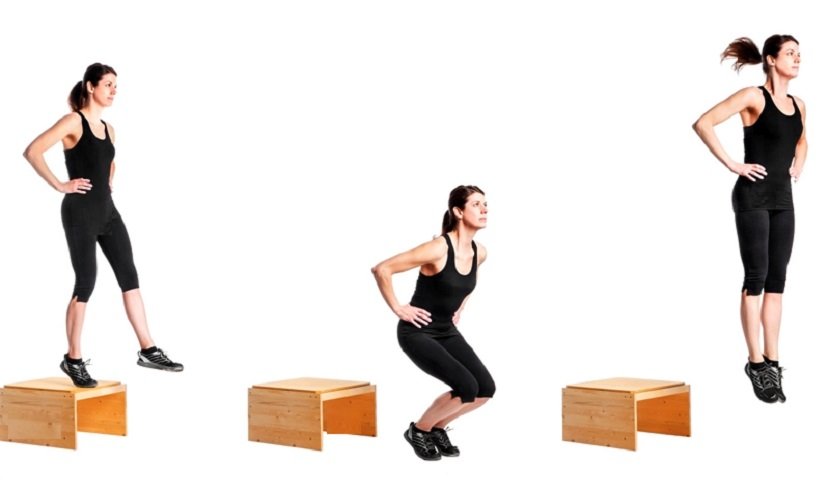Health And Fitness
Healthy Pregnancy Guide

Image Source: pexels
A healthy pregnancy ensures the well-being of both mother and baby. Proper health and fitness during this period can prevent complications. Expectant parents often feel a mix of excitement and anxiety. Encouragement and support play crucial roles in navigating this journey. Understanding the changes and developments week by week helps in making informed decisions. Regular check-ups and a balanced lifestyle contribute significantly to a positive pregnancy experience.
First Trimester (Weeks 1-12)
Conception and Early Development
Conception marks the beginning of pregnancy. The sperm fertilizes the egg, forming a zygote. This zygote travels down the fallopian tube and implants itself in the uterine wall. The cells begin to divide rapidly, forming the early embryo. During these initial weeks, the foundation for the baby’s brain, heart, bones, blood vessels, and organs starts to develop.
Early Symptoms and Changes
Early pregnancy symptoms often appear during weeks 1-4. Many women experience missed periods, nausea, and vomiting. Breast changes, such as tenderness and swelling, also occur. Fatigue and frequent urination are common. These symptoms result from hormonal changes preparing the body for the developing baby.
Weeks 5-8
Fetal Development Milestones
During weeks 5-8, the embryo undergoes significant growth. The heart begins to beat, and the brain starts to form. Limb buds appear, which will develop into arms and legs. The neural tube closes, forming the spinal cord. Major organs and systems, including the digestive and respiratory systems, start to take shape.
Maternal Changes and Symptoms
Expectant mothers may notice more pronounced symptoms. Morning sickness often peaks during this period. Increased blood flow can cause headaches and dizziness. Hormonal changes may lead to mood swings. The uterus expands, causing mild cramping and discomfort. Regular check-ups help monitor these changes and ensure maternal health.
Weeks 9-12
Key Developments in the Fetus
By weeks 9-12, the fetus reaches the end of the embryonic stage. The major organs and systems continue to grow and mature. The fetus’s sex organs begin to develop, although they remain undetectable on an ultrasound. The risk of miscarriage decreases as the first trimester ends, providing reassurance to many expectant parents.
Health Tips for the First Trimester
Maintaining health and fitness during the first trimester is crucial. A balanced diet rich in vitamins and minerals supports fetal development. Regular exercise, such as walking or prenatal yoga, helps manage weight and reduce stress. Avoiding harmful substances like alcohol and tobacco is essential. Regular prenatal visits ensure both mother and baby remain healthy.
Second Trimester (Weeks 13-26)
Weeks 13-16
Fetal Growth and Development
During weeks 13-16, the fetus undergoes rapid growth. The body lengthens, and the head becomes more proportional. Bones start to harden, and the skin forms a protective layer. The fetus begins to make movements, although these may not yet be felt by the mother. The development of facial features becomes more distinct.
Common Symptoms and Changes
Expectant mothers often experience a reduction in morning sickness during this period. Increased energy levels become noticeable. The uterus continues to expand, causing visible changes in the abdomen. Some women may experience round ligament pain due to the stretching of ligaments supporting the uterus. Regular prenatal visits help monitor these changes and ensure maternal health.
Weeks 17-20
Important Milestones
Weeks 17-20 mark significant milestones in fetal development. The fetus starts to hear sounds from outside the womb. The development of the nervous system progresses rapidly. The formation of fingerprints occurs, making each fetus unique. The mother may begin to feel the first fluttering movements, known as quickening.
Health and Nutrition Tips
Maintaining a balanced diet remains crucial during this stage of pregnancy. Foods rich in iron, calcium, and protein support fetal growth. Hydration helps prevent common issues like constipation. Regular exercise, such as swimming or walking, promotes health and fitness. Avoiding high-risk activities ensures the safety of both mother and baby.
Weeks 21-26
Fetal Movements and Growth
Fetal movements become more pronounced and frequent during weeks 21-26. The fetus gains weight and develops a layer of fat under the skin. The lungs continue to mature, preparing for breathing after birth. The senses of taste and touch develop, allowing the fetus to respond to stimuli.
Maternal Health and Well-being
Maternal health and well-being remain a priority. Regular check-ups help monitor blood pressure and glucose levels. Some women may experience swelling in the feet and ankles due to increased blood volume. Prenatal classes provide valuable information on childbirth and parenting. Emotional support from family and friends contributes to a positive pregnancy experience.
Third Trimester (Weeks 27-40)

Image Source: unsplash
Weeks 27-30
Final Stages of Fetal Development
During weeks 27-30, the fetus undergoes critical development. The brain develops rapidly, enhancing cognitive functions. The fetus gains weight quickly, adding body fat that will help after birth. Most internal systems are well-developed, but the lungs may still be immature. The fetus can see and hear most stimuli, responding to light and sound.
Preparing for Birth
Preparation for birth becomes essential during this period. Expectant mothers should start attending prenatal classes. These classes provide valuable information about childbirth and parenting. Packing a hospital bag with necessary items ensures readiness for delivery. Discussing a birth plan with healthcare providers helps in making informed decisions.
Weeks 31-35
Key Developments and Changes
Weeks 31-35 mark significant changes in both the mother and the fetus. The fetus continues to mature and develop reserves of body fat. The amniotic fluid begins to diminish. The fetus changes position frequently and responds to stimuli, including sound, pain, and light. The mother’s body undergoes noticeable changes as the baby develops.
Health Tips for the Third Trimester
Maintaining health and fitness remains crucial during the third trimester. A balanced diet rich in iron, calcium, and protein supports fetal growth. Regular exercise, such as walking or swimming, promotes overall well-being. Monitoring weight gain with the help of a healthcare provider ensures a healthy pregnancy. Avoiding high-risk activities and getting adequate rest contributes to maternal health.
Weeks 36-40
Signs of Labor
Recognizing signs of labor is vital as the due date approaches. Common signs include regular contractions, lower back pain, and a bloody show. The baby may drop into the pelvis, known as lightening. The rupture of the amniotic sac, or water breaking, indicates the onset of labor. Immediate contact with a healthcare provider is necessary when these signs appear.
Final Preparations for Delivery
Final preparations for delivery involve several steps. Confirming the birth plan with healthcare providers ensures clarity. Arranging transportation to the hospital or birthing center avoids last-minute stress. Ensuring the home is ready for the baby’s arrival provides peace of mind. Emotional support from family and friends plays a crucial role in easing anxiety.
Each trimester plays a crucial role in the journey of pregnancy. The first trimester lays the foundation for fetal development. The second trimester brings noticeable growth and increased energy. The third trimester prepares both mother and baby for birth.
Expectant parents should focus on maintaining a balanced diet and regular exercise. Emotional support from family and friends enhances well-being. Regular prenatal visits ensure a healthy pregnancy.
Consult healthcare providers for personalized advice. Professional guidance helps address any concerns and ensures the best care for both mother and baby.
FAQ: Pregnancy Guide
Q1: What are the first signs of pregnancy?
A1: The first signs of pregnancy can include a missed period, nausea (often referred to as morning sickness), fatigue, frequent urination, and breast tenderness. Some women may also experience light spotting or cramping early in pregnancy.
Q2: How can I confirm if I am pregnant?
A2: Pregnancy can be confirmed with a home pregnancy test, which detects the hormone hCG in urine. For more accurate results, it’s best to take the test after a missed period. A blood test at your doctor’s office can provide confirmation and detect pregnancy earlier.
Q3: What should I do after finding out I am pregnant?
A3: After confirming pregnancy, schedule an appointment with a healthcare provider for your first prenatal visit. During this visit, your doctor will discuss your medical history, perform a physical exam, and possibly conduct an ultrasound to confirm the pregnancy and estimate your due date.
Q4: How do I calculate my due date?
A4: The due date is typically calculated as 40 weeks from the first day of your last menstrual period (LMP). Your healthcare provider can also use an early ultrasound to help determine the most accurate due date.
Q5: What foods should I eat during pregnancy?
A5: A balanced diet rich in fruits, vegetables, whole grains, lean proteins, and dairy products is important during pregnancy. Foods high in folic acid, iron, calcium, and protein are particularly beneficial. Prenatal vitamins are also recommended to ensure you get essential nutrients.
Q6: What foods should I avoid during pregnancy?
A6: Pregnant women should avoid raw or undercooked meats, unpasteurized dairy products, certain types of fish high in mercury (like swordfish and king mackerel), and raw eggs. It’s also advisable to limit caffeine intake and avoid alcohol and tobacco completely.
Q7: How much weight should I gain during pregnancy?
A7: Weight gain recommendations during pregnancy vary based on your pre-pregnancy weight. On average, women with a normal BMI are advised to gain between 25-35 pounds. Your healthcare provider will provide personalized guidance based on your individual health needs.
Q8: What exercises are safe during pregnancy?
A8: Many exercises are safe during pregnancy, including walking, swimming, prenatal yoga, and light strength training. It’s important to avoid activities with a high risk of falling or abdominal trauma. Always consult your healthcare provider before starting or continuing an exercise routine during pregnancy.
Q9: What are common discomforts during pregnancy, and how can I manage them?
A9: Common discomforts include nausea, heartburn, back pain, and fatigue. These can often be managed with lifestyle changes such as eating small, frequent meals, staying hydrated, practicing good posture, and getting plenty of rest. Your healthcare provider can offer specific advice based on your symptoms.
Q10: What is prenatal care, and why is it important?
A10: Prenatal care involves regular medical checkups throughout pregnancy to monitor the health of both mother and baby. These visits are important for early detection of potential complications, tracking fetal development, and receiving important information about pregnancy, childbirth, and postpartum care.
Q11: What are the stages of fetal development?
A11: Pregnancy is divided into three trimesters. During the first trimester (weeks 1-12), the embryo develops vital organs. The second trimester (weeks 13-26) involves significant growth, and the fetus begins to move. In the third trimester (weeks 27-40), the fetus continues to grow, and its organs mature in preparation for birth.
Q12: How can I prepare for labor and delivery?
A12: Preparing for labor and delivery involves attending childbirth classes, creating a birth plan, choosing a healthcare provider and birthing location, and learning about pain management options. It’s also helpful to pack a hospital bag ahead of time and discuss your preferences with your healthcare team.
Q13: What is postpartum care, and why is it important?
A13: Postpartum care is the care you receive after childbirth. It includes physical recovery, emotional support, and newborn care. Regular checkups with your healthcare provider, support for breastfeeding, and attention to mental health are essential components of postpartum care.
Q14: When should I call my healthcare provider during pregnancy?
A14: You should contact your healthcare provider if you experience any unusual symptoms such as severe abdominal pain, heavy bleeding, sudden swelling, severe headaches, vision changes, or decreased fetal movement. It’s always better to err on the side of caution when it comes to your health and your baby’s well-being.
Q15: How can I manage stress during pregnancy?
A15: Managing stress during pregnancy is important for both mother and baby. Techniques such as prenatal yoga, meditation, deep breathing exercises, and maintaining a support system of family and friends can help reduce stress. Regular communication with your healthcare provider about any concerns is also beneficial.
Health And Fitness
Walgreens Closing 1,200 Stores: A Major Shift in U.S. Retail Pharmacy

Walgreens has announced plans to close 1,200 stores across the U.S. by 2027 in an effort to optimize its operations. This decision comes after facing profitability challenges, increased competition, and market shifts. CEO Tim Wentworth cited underperforming locations and a difficult consumer environment as primary reasons for the closures. The company aims to focus on its core retail pharmacy business while cutting costs and improving long-term growth potential.
Why Is Walgreens Closing Stores?
Walgreens faces multiple challenges, including shrinking profit margins and decreased foot traffic. In response to inflation and lower consumer spending, the company is streamlining operations by targeting underperforming locations for closure. The ongoing shift to online pharmacies and the rise of competitors like CVS have also put pressure on Walgreens’ brick-and-mortar stores.
Impact on Customers and Communities
Many customers worry about losing access to convenient pharmacy services, especially in smaller communities. However, Walgreens aims to maintain robust service levels by focusing on profitable stores and enhancing its digital offerings. The closures could create opportunities for local pharmacies to fill the gap left by Walgreens in certain areas, though concerns remain about the broader impact on healthcare access.
What’s Next for Walgreens?
Walgreens is not just shutting stores but also revamping its business strategy. The company is reducing its stake in VillageMD and refocusing on pharmacy operations. Walgreens is not just closing stores; the company is also implementing a major shift in its business strategy. This includes reducing its stake in VillageMD and refocusing on its pharmacy operations.
The company will continue to offer retail health services, but with a leaner footprint and improved operational efficiency. As these changes unfold, consumers may see further shifts in how and where they receive pharmacy services. The company’s strategic shift is a response to a changing retail landscape and the need to adapt to changing consumer preferences. Walgreens is making a significant investment in its pharmacy operations to ensure that it can provide the best possible pharmacy care for its customers.
Most Searched Queries Regarding Walgreens Closures:
- “Why is Walgreens closing stores?”
- “List of Walgreens stores closing”
- “Impact of Walgreens closures on healthcare”
- “Alternatives to Walgreens pharmacy services”
Walgreens’ future will depend on how well it adapts to changing consumer preferences and a highly competitive retail landscape.
Financial Struggles & Reduced Profitability
Walgreens has been struggling with reduced profit margins due to inflation, higher shrink (inventory losses from theft and errors), and declining foot traffic. The ongoing changes in the retail pharmacy landscape have prompted Walgreens to reevaluate its operations and shutter underperforming stores. This decision is part of a larger effort to cut costs, streamline its footprint, and optimize the company’s future profitability.
The company is also seeking to improve its ability to compete with other retail pharmacies, such as CVS Health and Rite Aid. Walgreens is also looking to improve its ability to compete with online retailers like Amazon, which have been expanding their healthcare offerings. The decision is also part of a larger effort to cut costs, streamline its footprint, and optimize the company’s future profitability.
Impact on Stock Performance
Walgreens’ financial challenges have caused its shares to drop significantly—over 45% in the last year. In response, the company also lowered its profit forecast for fiscal year 2024 to between $2.80 and $2.95 per share, down from the previous estimate of $3.20 to $3.35 per share.
Customer Service Adjustments
Though the store closures will reduce Walgreens’ physical presence, the company plans to enhance its digital services. It is also reworking its health services, including retail health clinics and pharmacy services, to focus on high-performing regions. Walgreens is reducing its involvement in secondary ventures, like VillageMD, to realign with its core retail pharmacy business.
Workforce Reductions
As part of its cost-cutting strategy, Walgreens recently announced that it will be closing 1,200 stores by 2027. The company also revealed that it will be reducing its workforce, including layoffs across its corporate and retail divisions. While the exact number of job cuts has not been specified, the company has stated that it will be making the necessary changes to ensure its long-term success. This includes layoffs across its corporate and retail divisions, though the company has not specified the exact number of job cuts.
Questions from Consumers
- “How many Walgreens stores are closing?”
- “What will happen to Walgreens employees?”
- “Will Walgreens’ pharmacy services be affected by store closures?”
- “Are there alternatives to Walgreens in my area?”
The closures are part of Walgreens’ strategy to address the rapidly changing retail pharmacy market, ensuring long-term growth while navigating current economic challenges.
FAQs on Walgreens’ Store Closures
1. How many Walgreens stores are closing?
Walgreens plans to close around 1,200 stores by 2027, primarily focusing on underperforming locations.
2. Why is Walgreens closing stores?
Walgreens is closing stores due to declining profit margins, high operational costs, inflationary pressures, and competition from other pharmacies and online retailers.
3. Will pharmacy services be impacted?
While some stores will close, Walgreens intends to enhance its digital pharmacy services to maintain customer access to prescriptions.
4. What will happen to Walgreens employees?
Layoffs are expected as a result of these closures, but the company has not specified the total number of jobs affected.
5. How will this impact local communities?
Closures could lead to reduced access to pharmacy services in certain areas, particularly smaller communities, but Walgreens is working to consolidate operations to maintain essential services.
6. How do I find out if my local Walgreens is closing?
The company will release specific lists of store closures over time, so keep an eye on official announcements or check with your local store.
7. Are there alternatives to Walgreens?
Customers can explore other national chains like CVS, Rite Aid, or local pharmacies, depending on location and services offered.
Health And Fitness
How to Choose a Rehab for Lasting Recovery

Choosing the right rehabilitation center can be one of the most transformative decisions in your journey to sobriety. It’s more than just picking a place—it’s about finding the support system that will walk with you toward lasting recovery and a better quality of life. Did you know that 80% of patients report improved health after completing their programs? With the right rehab center, your chances of staying drug-free after treatment rise to as much as 95%.
The path to recovery is deeply personal, and the rehab center you choose can play a pivotal role in shaping your future. This decision can be the key to unlocking a healthier, happier life. You deserve the best care, so take the time to make an informed choice that will support your long-term success.
Identifying Personal Treatment Goals
Assessing Your Needs
Defining your personal treatment goals helps you focus on what truly matters in your recovery journey. What do you want to achieve? Is it maintaining sobriety, improving your mental health, or rebuilding relationships? By being clear about your goals, you can choose a rehab center that aligns with your vision for a better future.
It’s also important to understand the level of care you need. Some people may thrive in an intensive inpatient program, while others find success in outpatient care. Take a moment to honestly assess your situation. The right support can make all the difference, guiding you toward lasting recovery and a life full of possibility.
Consulting with Treatment Providers
Health And Fitness
Boost Muscle Power Workouts for Athletes

How to Boost Muscle Power: Top Workouts for Athletes
Muscle power is crucial for athletic performance, as athletes depend on generating power rather than solely focusing on maximum strength. Muscle Power Workouts for Athletes are designed to enhance power output, which is a key predictor of success in various sports and also aids in improving mobility among older adults. These workouts are essential for health and fitness, as they focus on exercises that increase explosive strength, tailoring muscles for specific sports. By engaging in these targeted training sessions, athletes can achieve peak performance.
Definition and Importance
What is Muscle Power?
Muscle power refers to the ability of muscles to exert force rapidly. This concept combines strength and speed to produce explosive movements. Athletes rely on muscle power to perform actions like jumping, sprinting, and throwing. The relationship between strength and speed defines muscle power. Training programs often focus on enhancing this attribute to improve athletic performance.
Why is it crucial for athletes?
Athletes benefit from increased muscle power in several ways. Enhanced muscle power contributes to better performance in sports-specific tasks. Activities such as sprinting, jumping, and changing direction quickly require high levels of muscle power. Greater muscle power also reduces the risk of injury by improving the body’s ability to handle dynamic movements. According to research, muscular strength and power significantly influence athletic performance, impacting speed, endurance, and resilience.
Factors Affecting Muscle Power
Muscle Fiber Types
Muscle fibers play a crucial role in determining muscle power. There are two main types of muscle fibers: Type I (slow-twitch) and Type II (fast-twitch). Fast-twitch fibers generate more power and are essential for explosive movements. Athletes with a higher proportion of fast-twitch fibers tend to excel in power-based activities. Training can enhance the efficiency of these fibers, leading to improved performance.
Neuromuscular Efficiency
Neuromuscular efficiency refers to the ability of the nervous system to communicate effectively with muscles. Efficient neuromuscular function allows for quicker and more powerful muscle contractions. Athletes can improve neuromuscular efficiency through specific training techniques. Exercises that emphasize speed and coordination help enhance this connection. Improved neuromuscular efficiency results in better force production and overall athletic performance.
Muscle Power Training for Beginners: Improve Flexibility and Mobility

Flexibility is a crucial component of physical fitness, but for many people, tightness and stiffness in the body can make stretching uncomfortable or intimidating. If you’re not very flexible, this 8-minute stretching routine is designed for you. It’s simple, requires no equipment, and addresses all the major muscle groups to help improve your mobility. Say goodbye to complicated yoga poses and advanced stretches—this is all about practical movements that will gently loosen up your muscles and joints.
1. Lumbar Rotation Stretch
This stretch targets the lower back and hips, two areas where many people experience tightness.
How to Do It:
- Lie on your back with your right knee bent.
- Use your left hand to grab the outside of your right knee and gently pull it over to your left side, allowing your body to twist.
- You should feel a stretch through your lower back and hip.
- Hold this position for 30 seconds.
Tip: Keep your movements slow and controlled, and only twist as far as is comfortable for your body.
2. Supine Hamstring Stretch
Hamstrings are often one of the tightest muscle groups, especially if you sit for long periods.
How to Do It:
- Lie on your back with your left leg straight.
- Cup both hands behind your right knee.
- Slowly straighten your right leg toward the ceiling until you feel a stretch in the back of your thigh (hamstring).
- Hold for 30 seconds, then switch legs.
Tip: Be sure not to force your leg straight; aim for a gentle stretch without pain.
3. Piriformis Stretch
The piriformis is a small muscle deep in the hip that can cause discomfort when tight. This stretch can relieve tension in the hips and lower back.
How to Do It:
- Cross your right leg over your left knee, forming a “figure four.”
- Grab your left knee and pull it toward your chest until you feel a stretch in your right hip.
- Hold for 30 seconds, then switch sides.
Tip: This is an excellent stretch for reducing tightness that contributes to sciatica or hip discomfort.
4. Tall Kneeling Hip Flexor Stretch
Your hip flexors can get tight from sitting too much, which can affect your posture and mobility. This stretch helps to lengthen those muscles.
How to Do It:
- Kneel on your right knee and take a large step forward with your left foot.
- Shift your weight forward, keeping your back straight, until you feel a stretch in the front of your right hip.
- Hold for 30 seconds, then switch sides.
Tip: Keep your torso upright and avoid arching your lower back.
5. Kneeling Hamstring Stretch
This is another great stretch for your hamstrings, but from a kneeling position.
How to Do It:
- From the tall kneeling position, shift your weight back onto your right knee.
- Straighten your left leg in front of you.
- Keep your back straight and lean forward from the hips until you feel a stretch in your left hamstring.
- Hold for 30 seconds, then switch sides.
Tip: Engage your core to avoid rounding your back during this stretch.
6. Seated Spine Rotation Stretch
Spinal mobility is essential for everyday movements like bending and twisting. This stretch helps to loosen up your mid and upper back.
How to Do It:
- Sit with your legs out in front of you.
- Cross your left leg over your right, planting your left foot flat on the floor.
- Twist your torso to the left, placing your right elbow on the outside of your left knee for leverage.
- Hold the stretch for 30 seconds, then switch sides.
Tip: This stretch may cause a few pops in your back, but that’s perfectly normal as long as there’s no pain.
7. Child’s Pose Stretch
The child’s pose is a classic yoga stretch that targets the entire back, especially the lats and spine.
How to Do It:
- Start on all fours (hands and knees).
- Sit your hips back toward your heels while reaching your arms forward.
- Tuck your chin into your chest and sink into the stretch, feeling the lengthening in your back.
- Hold for 30 seconds.
Tip: Breathe deeply and let your body relax into the stretch for maximum benefit.
8. Upper Back Extension
This movement opens up the chest and stretches the upper back, perfect for counteracting poor posture from sitting.
How to Do It:
- Sit or stand with your fingertips behind your head.
- Bring your elbows together and fold forward slightly.
- Then, lift your chest and elbows up, opening through your upper back and chest.
- Repeat this movement three times.
Tip: This dynamic stretch is excellent for improving posture and chest mobility.
9. Upper Traps Stretch
The trapezius muscles in the neck and upper back can get very tight, especially if you spend a lot of time hunched over a computer or phone.
How to Do It:
- Tilt your head to the left, bringing your left ear toward your left shoulder.
- Use your left hand to gently apply pressure to the right side of your head.
- Hold for 30 seconds, then switch sides.
Tip: Keep the stretch gentle—this is a sensitive area, and too much pressure can cause discomfort.
Plyometric Exercises

Box Jumps
Box jumps enhance explosive power. Athletes use box jumps to improve vertical leap and agility. The exercise involves jumping onto a raised platform. Box jumps require coordination and strength. Consistent practice increases muscle power and reduces injury risk.
Depth Jumps
Depth jumps focus on rapid force production. Athletes step off a box and immediately jump upon landing. This exercise trains muscles to react quickly. Depth jumps improve neuromuscular efficiency. Athletes gain better performance in sports requiring quick direction changes.
Olympic Weightlifting
Clean and Jerk
The clean and jerk builds total body power. Athletes lift a barbell from the ground to overhead. This movement combines strength and speed. The clean and jerk enhances muscle power and coordination. Regular training improves athletic performance in explosive sports.
Snatch
The snatch develops explosive strength. Athletes lift a barbell from the ground to overhead in one motion. This exercise requires precision and power. The snatch increases muscle power and flexibility. Athletes benefit from improved performance in dynamic sports activities.
Sprint Training
Short Distance Sprints
Short distance sprints boost speed and power. Athletes run at maximum effort for short distances. This training enhances fast-twitch muscle fibers. Short sprints improve acceleration and agility. Athletes gain an edge in sports demanding quick bursts of speed.
Hill Sprints
Hill sprints increase lower body strength. Athletes sprint uphill to build muscle power. This exercise challenges endurance and explosiveness. Hill sprints improve cardiovascular fitness and leg strength. Athletes experience enhanced performance in endurance-based sports.
Case Studies show that integrating these Muscle Power Workouts for Athletes leads to significant improvements. Research highlights the effectiveness of combining strength and ballistic-power training. Athletes achieve better results through targeted programs. These workouts reduce injuries and enhance overall performance.
Programming Ideas for Power Development
Periodization Techniques
Linear Periodization
Linear periodization involves a structured progression in training intensity. Athletes start with high-volume, low-intensity workouts. Over time, the focus shifts to low-volume, high-intensity sessions. This method enhances muscle power by gradually increasing the load on muscles. Research shows that linear periodization can lead to significant strength gains. Coaches often use this technique to prepare athletes for peak performance during competitions.
Undulating Periodization
Undulating periodization offers more variation in training. Athletes alternate between different intensities and volumes within a week. This approach prevents training plateaus and keeps workouts engaging. Studies indicate that undulating periodization can produce similar strength gains as linear models. Athletes benefit from the flexibility and adaptability of this method. Coaches can tailor programs to meet specific needs and goals.
Integrating Power Workouts into Training
Weekly Training Schedule
A well-structured weekly training schedule maximizes power development. Athletes should include a mix of strength, speed, and endurance sessions. Each week might feature two to three power-focused workouts. These sessions could involve plyometrics, Olympic lifts, or sprint drills. Rest days are crucial for recovery and muscle growth. Monitoring progress helps in adjusting the schedule for optimal results.
Balancing Power and Endurance
Balancing power and endurance is essential for comprehensive athletic performance. Athletes should incorporate both elements into their training regimen. Power workouts enhance explosive strength and speed. Endurance sessions build stamina and cardiovascular health. A balanced approach ensures athletes maintain peak performance across various sports demands. Coaches can design programs that integrate both aspects effectively.
-

 News1 year ago
News1 year agoKolkata Doctor Case: Tragic Story of Dr. Moumita Debnath
-

 Health And Fitness1 year ago
Health And Fitness1 year agoPepsi Zero Sugar vs Diet Pepsi: Which Is Healthier?
-

 Health And Fitness1 year ago
Health And Fitness1 year agoHow to Choose a Rehab for Lasting Recovery
-

 News1 year ago
News1 year agoLondon King Opens Up About Her Relationship with Rob Schneider
-

 Tech Innovation1 year ago
Tech Innovation1 year agoTop Machine Learning and Deep Learning Trends for 2024
-

 Tech Innovation1 year ago
Tech Innovation1 year agoHuawei Mate XT: A Detailed Review of the World’s First Tri-Fold Smartphone
-

 Health And Fitness1 year ago
Health And Fitness1 year agoCoca-Cola Zero Sugar vs Diet Coke: Which One to Choose In 2025?
-

 News11 months ago
News11 months agoTyra Banks Biography: Age, Husband, Net Worth

